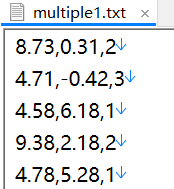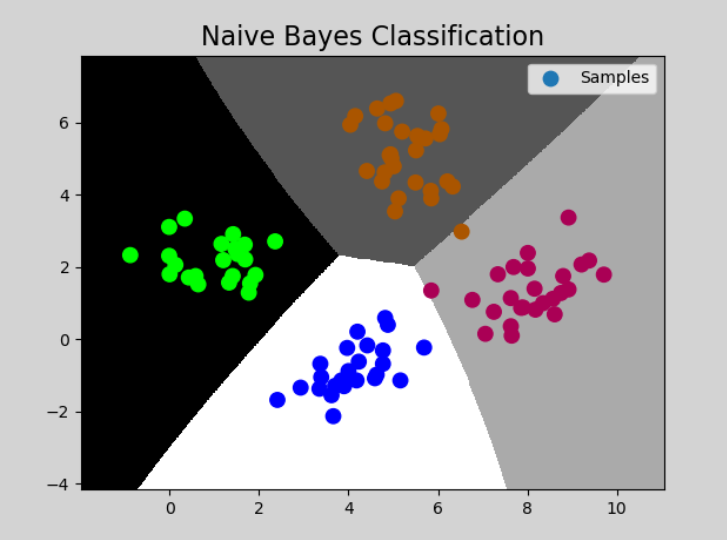交叉验证-准确率
-
查看

-
案例1
import numpy as np import matplotlib.pyplot as mp import sklearn.naive_bayes as nb import sklearn.model_selection as ms # 整理样本 data = np.loadtxt( './multiple1.txt', delimiter=',') x = data[:, :2] y = data[:, -1] print(x.shape, y.shape) # 训练模型 train_x, test_x, train_y, test_y = ms.train_test_split(x, y, test_size=0.25, random_state=7) model = nb.GaussianNB() # 5交叉验证 ,看下准确度指标如何 需要先把模型对象创建出来。。 自动拆成5段。对每一段做预测。 acc = ms.cross_val_score(model, train_x, train_y, cv=5, scoring='accuracy') print(acc,"accuracy socre 5次交叉验证每次得分。 # 精确度") print(acc.mean() ,"accuracy socre 5次交叉验证 的平均得分。。 # 精确度") pw = ms.cross_val_score(model, train_x, train_y, cv=5, scoring='precision_weighted') print(acc.mean() ,"查准率") rw = ms.cross_val_score(model, train_x, train_y, cv=5, scoring='recall_weighted') print(rw.mean() ,"召回率") f1 = ms.cross_val_score(model, train_x, train_y, cv=5, scoring='f1_weighted') print(f1.mean() ,"f1 得分") model.fit(train_x, train_y) # 使用测试集,检测预测结果正确率 pred_test_y = model.predict(test_x) acc = (test_y == pred_test_y).sum() / test_y.size print(acc) # 画图 mp.figure('Naive Bayes Classification', facecolor='lightgray') mp.title('Naive Bayes Classification', fontsize=16) # 绘制分类边界线 n = 500 l, r = x[:,0].min()-1, x[:,0].max()+1 b, t = x[:,1].min()-1, x[:,1].max()+1 grid_x, grid_y = np.meshgrid(np.linspace(l, r, n), np.linspace(b, t, n)) # 根据业务,模拟预测 mesh_x = np.column_stack((grid_x.ravel(), grid_y.ravel())) grid_z = model.predict(mesh_x) # 把grid_z 变维:(500,500) grid_z = grid_z.reshape(grid_x.shape) mp.pcolormesh(grid_x, grid_y, grid_z, cmap='gray') mp.scatter(test_x[:,0], test_x[:,1], s=80, c=test_y, cmap='brg_r', label='Samples') mp.legend() mp.show()
- 控制台打印
(400, 2) (400,) [1. 1. 1. 1. 0.98305085] accuracy socre 5次交叉验证每次得分。 # 精确度 0.9966101694915255 accuracy socre 5次交叉验证 的平均得分。。 # 精确度 0.9966101694915255 查准率 0.9966101694915255 召回率 0.9966063988235516 f1 得分 0.99
- 输出



· 阿里巴巴 QwQ-32B真的超越了 DeepSeek R-1吗?
· 10年+ .NET Coder 心语 ── 封装的思维:从隐藏、稳定开始理解其本质意义
· 【设计模式】告别冗长if-else语句:使用策略模式优化代码结构
· 字符编码:从基础到乱码解决
· 提示词工程——AI应用必不可少的技术